
February 19 marks 2015’s Chinese New Year and while the worldwide parades, golden dragons, crimson lanterns and money envelopes may catch your attention, don’t let it distract you from the wealth of traditional food served during the Lunar New Year. Just as the alternating animal zodiacs bring new tidings every year, the food surrounding this celebration also carries meaning.
A traditional Chinese New Year’s Eve dinner is a time for reunion and tradition amoung family and friends. To help bring about a successful new year certain foods are eaten to make finding good luck a little easier. Imperial Tours has complied a list of some traditional foods to help you and your kin celebrate Chinese New Year. After all, who doesn’t need a little extra luck…and food?

Citrus Fruit: shui guo 水果
Mandarin oranges are said to bring wealth and good luck. That’s because the Chinese word for orange and gold sound similar, while the word for tangerine also sounds like the Chinese word for luck.

Long Noodles :mian tiao 麵條
The longer the noodle, the longer the life span!

Tray Of Togetherness: 中國新年攢盒
This tray is filled with snacks like candied fruit melons, for growth and health, dried coconut, for friendship and unity, kumquats, signifying gold and prosperity, and lotus seeds for fertility. It’s best if there are eight compartments! Eight is a lucky number in Chinese culture.

Dried Oysters: 蠔豉
The Chinese word for dried oysters sounds similar to good business.

Whole Fish: yu 魚
The saying that goes with this Chinese New Year dish is "nian nian you yu" 年年有餘, which means, "may the year bring prosperity." Make sure to serve the fish whole with head and tail intact to represent a strong start and a good end for the coming year. Never forget to keep leftovers for the next day, the leftovers foreshadow an overflow of prosperity!

Jiaozi: Dumplings: jiao zhi 餃子
Dumplings shaped like ancient Chinese money (ingots), symbolize wealth and prosperity. Traditionally in Northern China, families spend New Year’s Eve preparing the dumplings, one of which has a hidden coin inside and then eat as many as they can at midnight. The more dumplings you eat, the more money you make in the New Year! This custom dates back to the Ming and Qing Dynasties and is associated with the saying "gen shui jiao zhi" 更歲交子, or "ring out the old year and ring in the new."

Lion's Head Meatballs: 獅子頭
Giant meatballs, wrapped in a “mane” of bok choy. The “lion” represents power and strength while the meatball symbolizes family unity.
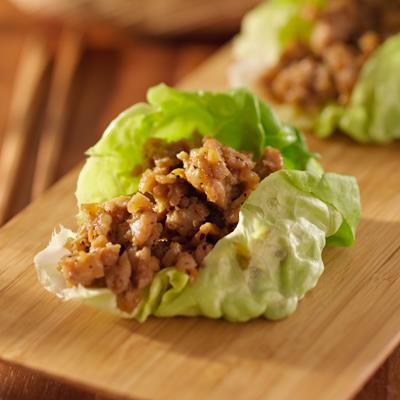
Lettuce Wraps
In Chinese the word for lettuce sounds like rising fortune. These can be filled with an assortment of meat and veggies.
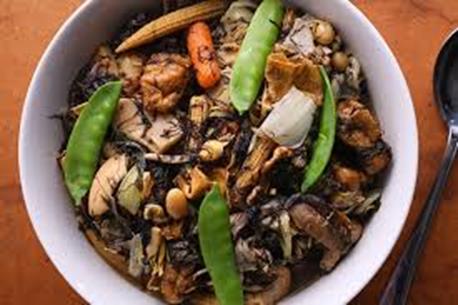
Jai: Buddha’s Delight: 羅漢齋
In Buddhism it is tradition to not kill any animals or fish on the first day of the Lunar New Year. All of the vegetables are considered to be purifying, and the type of vegetable can also symbolize prosperity, fertility, and a myriad of other meanings.
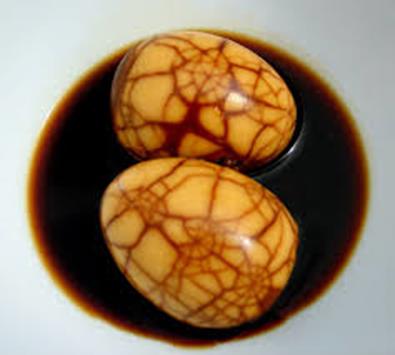
Tea Eggs: 茶葉蛋
Eggs symbolize fertility. Boil them in any kind of tea or soup to add beauty and taste to this Chinese staple.
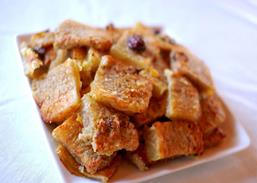
Rice cake: nian gao 年糕
The Chinese word for rice cake is associated with the phrase "nian nian gao sheng 年年高升," which means "increasing prosperity year after year."

Mustard greens: changnian cai 長年菜
Mustard greens, when eaten entirely, symbolize longevity.
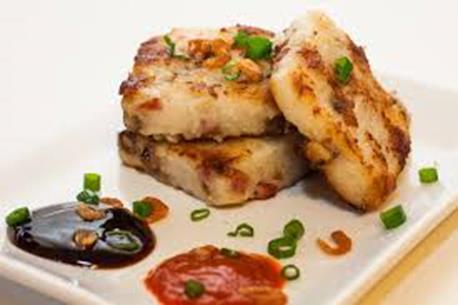
Turnip cake: luo buo gao 蘿蔔糕
Turnip cakes are associated with the phrase, "hao cai tao" 好彩頭, which translates to good luck.
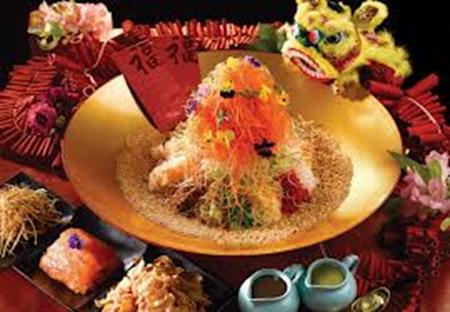
Chinese New Year Salad: Yu Sheng 鱼生
This dish is traditionally served on “everyone’s birthday” or the seventh day of Chinese New Year. The higher you toss the salad, the greater your luck and success in the New Year!
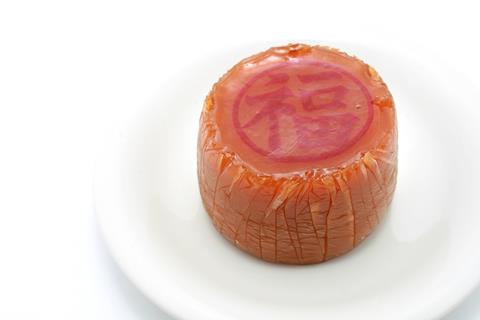
Nian Gao: Year Cake 年糕
This desert is supposed to help those eating it climb the social ladder. This is because nian gao is a homonym for “higher year.”